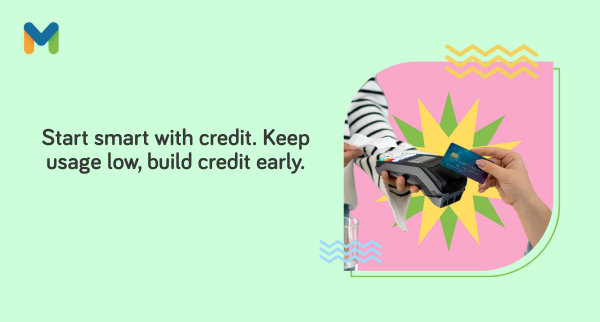Using your credit card wisely doesn’t just mean avoiding overspending—it also involves understanding how your spending behavior impacts your credit score.
One key factor is your credit utilization ratio, a critical but often misunderstood part of your credit profile. Whether you’re trying to build your credit, apply for a loan, or simply manage your finances better, knowing how credit utilization works can help you make smarter decisions.
In this guide, we’ll break down what it is, why it matters, what’s considered a good ratio, how to lower it, and common myths to avoid.
What Is Credit Utilization?
Credit utilization refers to the percentage of your available credit limit that you're currently using. It's calculated by dividing your outstanding credit card balance by your total credit limit and multiplying by 100 to get a percentage. For instance, if your total credit limit is ₱100,000 and you’ve used ₱30,000, your credit utilization rate is 30%.
This percentage reflects how dependent you are on your available credit. Banks and lenders use this as a measure of your credit risk—lower is typically better.

Why Credit Utilization Matters
Credit utilization is one of the most influential factors in calculating your credit score. In the Philippines, credit bureaus like the Credit Information Corporation1 (CIC) and private agencies track how you manage your credit. A high utilization rate can hurt your score, indicating financial stress or a pattern of overspending.
On the flip side, maintaining a low utilization ratio suggests that you are a responsible borrower who doesn’t rely heavily on credit, making you more attractive to lenders. This can lead to better loan terms, higher credit limits2, and easier approval for future financial products.
What’s a Good Credit Utilization Ratio?
Financial experts often recommend keeping your credit utilization below 30%—this means using no more than 30% of your total credit limit at any time. For example, if your limit is ₱50,000, try not to spend more than ₱15,000.
However, the lower your ratio, the better. Some credit-conscious individuals aim for 10% or less to maintain an excellent credit standing. Just make sure your balance is low when your bank reports to credit bureaus—this timing matters just as much as how much you spend.
What Happens If I Maxed Out My Credit Card?
Maxing out your credit card pushes your credit utilization ratio to 100%, which can negatively affect your financial standing. It sends a red flag to lenders that you may be overextended and struggling to manage debt. Here’s what could happen:
- Drop in your credit score – A high utilization ratio can significantly lower your credit score, especially if left unpaid for long.
- Overlimit fees – Some banks may charge extra if you exceed your credit limit.
- Suspended or reduced credit limit – Issuers may freeze or lower your available credit.
- Higher minimum payments – A maxed-out card increases your monthly dues, which may strain your budget.
- Increased risk of missed payments – This can lead to more fees and further damage to your credit score.
How to Lower Your Credit Utilization
If your credit utilization is creeping above the ideal range, don’t panic—there are several practical steps you can take to bring it down and keep your credit score healthy. High utilization may be a result of everyday spending, unexpected expenses, or simply not knowing how it affects your credit. The good news is that you can regain control with a few simple strategies:
- Pay your balance early and often – Don’t wait for your due date. Credit utilization is usually calculated based on your statement balance, so making payments before your cutoff date can significantly reduce the amount reported to credit bureaus.
- Ask for a credit limit increase – If your income has improved or you’ve been a responsible cardholder, your bank may approve a higher credit limit. This instantly lowers your credit utilization ratio, even if your spending stays the same.
- Use multiple credit cards responsibly – If you have more than one credit card, consider spreading your purchases across them instead of maxing out a single card. This keeps individual utilization low and avoids the risk of triggering fraud flags.
- Avoid large one-time charges on your card – If you need to make a big purchase, consider using cash, debit, or a short-term installment loan to avoid a sudden spike in utilization.
- Set balance alerts or budget limits – Use your bank's mobile app to receive alerts when your spending approaches a certain threshold. This can help you stay aware of how much of your limit you’re using.
Lowering your utilization isn’t about avoiding credit—it’s about using it strategically to show banks and lenders that you can manage debt responsibly.
Myths About Credit Utilization
There are plenty of misconceptions about how credit utilization works, and believing them can hurt your credit more than help it. Understanding the truth behind these myths is key to making informed financial decisions and building a strong credit profile.
- Myth 1: You should never use more than 30% of your credit limit.
While the 30% rule is a useful benchmark, it’s not a hard rule. Some experts recommend keeping it below 10% for the best credit score impact. It’s also more important to look at your overall spending habits and repayment consistency. - Myth 2: Carrying a balance improves your credit score.
This is one of the most common misconceptions. Carrying a balance—and especially paying interest on it—doesn’t help your score. What matters is that you use your credit regularly and pay off your balance in full and on time. - Myth 3: Using your full limit occasionally won’t affect your score.
Even if you pay it off quickly, maxing out your credit card—even once—can temporarily lower your credit score. High usage signals potential risk to lenders, even if it’s short-term. - Myth 4: All credit card activity impacts your credit score equally.
In reality, your statement balance and utilization rate at the time of reporting have more influence than daily fluctuations. Timing your payments wisely can help you control how your usage appears to credit bureaus.
Dispelling these myths is essential to managing your credit card more effectively and making decisions that truly support long-term financial health.
Be Credit-Smart, Spend Wisely
Credit utilization plays a huge role in your financial credibility. By keeping your usage low, paying bills early, and avoiding common credit myths, you can strengthen your credit profile and open doors to better financial opportunities.
Ready to take more control of your credit? Compare the best credit cards in the Philippines—look for features like higher credit limits, low interest rates, and real-time spending alerts. Start building smarter credit habits today at Moneymax.
Sources:
-
[1] About your CIC Credit Report (Credit Information Corporation)
-
[2] How to Get Approved for High-Credit Limit Credit Cards in the Philippines (RCBC, October 2024)






